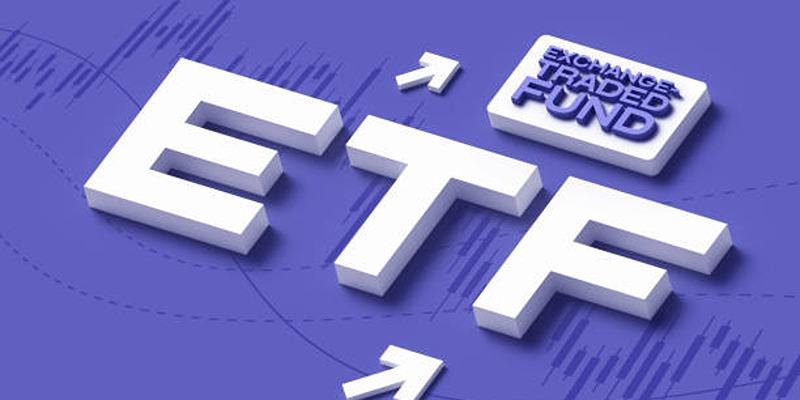There is therefore no better way to invest in the energy sector without the risk of choosing individual securities than to invest in energy ETFs. Energy ETFs include stocks in that sector where they can include oil and gas companies, renewable energy, and utility companies. They add diversification, liquidity, and the ability to capture value-added industrial trends into the investment portfolio. In this article, we will be highlighting some of the highest-performing energy ETFs, the advantages of investing in energy ETFs, and how to make a correct investment decision towards an ETF investment.
What Are Energy ETFs?
 Energy ETFs are investments products that mimic the index of certain companies belonging to the energy sector. Examples include upstream and downstream oil and gas companies, renewable energy firms, and energy transportation and storage companies. By purchasing these ETFs, you are exposed to the whole energy market without purchasing particular shares.
Energy ETFs are investments products that mimic the index of certain companies belonging to the energy sector. Examples include upstream and downstream oil and gas companies, renewable energy firms, and energy transportation and storage companies. By purchasing these ETFs, you are exposed to the whole energy market without purchasing particular shares.
Energy ETFs are typically divided into two categories:
- Traditional Energy ETFs: FOR EXAMPLE, target industries such as fossil fuel, including the oil and gas industries.
- Renewable Energy ETFs: Get ready for business with companies in solar, wind, and other green energy sources.
Why Invest in Energy ETFs?
Energy ETFs enjoy the popularity of investment as they are convenient as well as offer diversification and the possibility of growth. Here are the main benefits:
- Diversification: Energy ETFs hold an array of companies which helps diversify the risk of putting all your eggs in one basket.
- Liquidity: ETFs trade on stock exchanges, making it easy to buy and sell shares throughout the trading day.
- Cost-Effectiveness: Most ETFs have low expense ratios compared to mutual funds.
- Sector Growth: The energy sector is crucial for global economies, with continuous innovation and demand driving its performance.
Top Energy ETFs to Watch
Here are some of the top-performing energy ETFs that have gained traction among investors, showcasing impressive returns and offering diverse investment opportunities within the energy sector:
1. Energy Select Sector SPDR Fund (XLE)
XLE is widely recognized as one of the most popular and liquid exchange-traded funds in the energy sector. By concentrating on large-cap companies within the S&P 500 Energy sector, it offers investors a robust option for accessing the dynamic energy market.
- Top Holdings: ExxonMobil, Chevron, and ConocoPhillips.
- Performance: XLE consistently delivers strong returns, driven by rising oil prices and demand.
- Expense Ratio: 0.10%
2. Vanguard Energy ETF (VDE)
VDE offers extensive exposure to the diverse U.S. energy sector, encompassing a wide range of industries such as oil, gas, and renewable energy companies. By investing in VDE, you gain access to a comprehensive portfolio that reflects the dynamic and evolving landscape of energy production and distribution across the country. This broad-based approach not only enhances potential growth opportunities but also provides a balanced investment perspective within the constantly shifting energy market.
- Top Holdings: ExxonMobil, Chevron, and Schlumberger.
- Performance: VDE balances growth and stability with a diversified portfolio.
- Expense Ratio: 0.10%
3. iShares Global Clean Energy ETF (ICLN)
ICLN is an investment fund that focuses on renewable energy companies globally, including those involved in solar and wind power production. It seeks to target businesses that are leading the transition to cleaner energy sources, supporting innovations and advancements in sustainable technologies. By investing in these companies, ICLN aims to contribute to the growth of the renewable energy sector and promote a more environmentally friendly future.
- Top Holdings: Enphase Energy, Vestas Wind Systems, and First Solar.
- Performance: ICLN benefits from the global shift toward clean energy and sustainability.
- Expense Ratio: 0.42%
4. First Trust NASDAQ Clean Edge Green Energy Index Fund (QCLN)
QCLN is an index that tracks the performance of clean energy companies listed on the NASDAQ stock exchange. It encompasses a diverse range of businesses, including manufacturers of renewable energy equipment, innovative technology providers developing sustainable solutions, and utility companies transitioning towards greener energy sources. By investing in QCLN, investors gain exposure to the growing clean energy sector and support the shift towards environmentally friendly practices.
- Top Holdings: Tesla, Plug Power, and SolarEdge.
- Performance: The fund has shown strong growth, particularly in renewable technologies.
- Expense Ratio: 0.58%
5. SPDR S&P Oil & Gas Exploration & Production ETF (XOP)
XOP focuses on companies involved in oil and gas exploration and production. This exchange-traded fund (ETF) provides investors with exposure to a diversified portfolio of energy stocks, which are known for their higher volatility compared to other sectors. Despite the increased risk, these companies offer significant upside potential, especially when oil and gas prices rise, making them an attractive option for those looking to capitalize on the energy market's growth opportunities.
- Top Holdings: Diamondback Energy, Marathon Oil, and Devon Energy.
- Performance: XOP thrives during periods of high oil demand and rising prices.
- Expense Ratio: 0.35%
How to Choose the Right Energy ETF
Choosing the right energy ETF requires careful consideration of your investment goals and risk tolerance. Begin by assessing the sectors you are interested in, whether traditional fossil fuels or renewable energy sources.
1. Assess Your Investment Goals
Consider whether you are looking for long-term growth, income through dividends, or exposure to renewable energy trends. Your goals will influence your choice.
2. Analyze Expense Ratios
Expense ratios can impact your returns over time. Look for funds with lower fees, especially if you plan to hold them long-term.
3. Check Performance History
Review the ETF's historical performance and compare it to its benchmark index. This will give you an idea of its consistency and reliability.
4. Diversify Your Portfolio
Avoid putting all your money into a single ETF or sector. Balance your portfolio with other sectors to reduce overall risk.
5. Consider Dividends
Some energy ETFs pay dividends, making them attractive for income-focused investors. Research the fund's yield before investing.
The Future of Energy ETFs
 The energy sector is evolving, driven by technological advancements and the transition to renewable energy. While traditional energy sources like oil and gas remain important, the focus is gradually shifting to clean energy. Energy ETFs that include renewable energy companies are likely to see significant growth in the coming years.
The energy sector is evolving, driven by technological advancements and the transition to renewable energy. While traditional energy sources like oil and gas remain important, the focus is gradually shifting to clean energy. Energy ETFs that include renewable energy companies are likely to see significant growth in the coming years.
Investors should stay informed about industry trends, government policies, and market dynamics. A diversified approach that includes both traditional and renewable energy ETFs can help balance risks and rewards.
Conclusion
Energy ETFs are an excellent way to invest in a dynamic and essential sector. Whether you prefer the stability of traditional energy companies or the growth potential of renewable energy, there is an ETF to suit your needs. Popular options like XLE, VDE, and ICLN provide diverse exposure, making them ideal for building a robust portfolio. By understanding your investment goals and analyzing the ETFs' performance, you can select the best-performing energy ETFs to achieve your financial objectives. Start exploring the world of energy ETFs today to power your investment journey.






